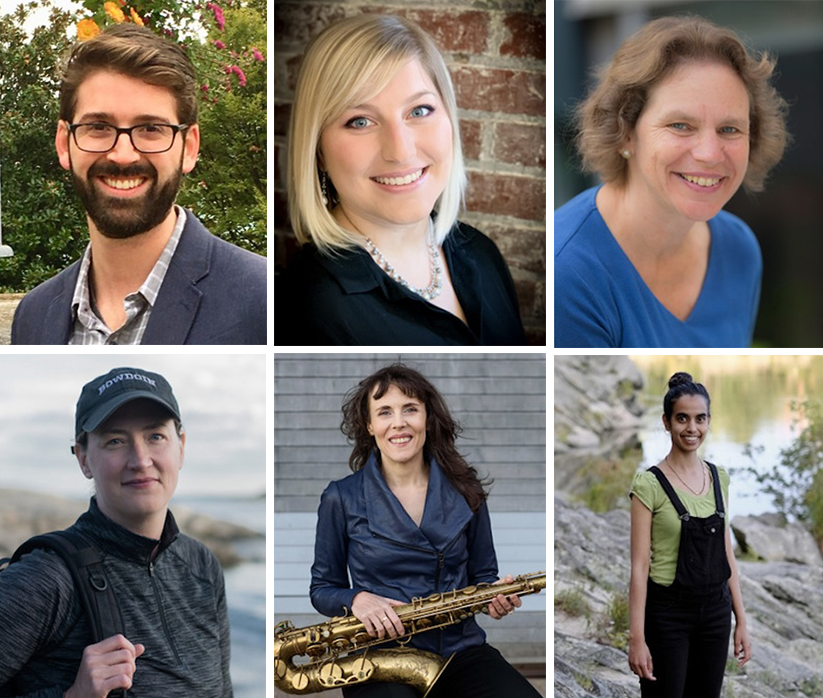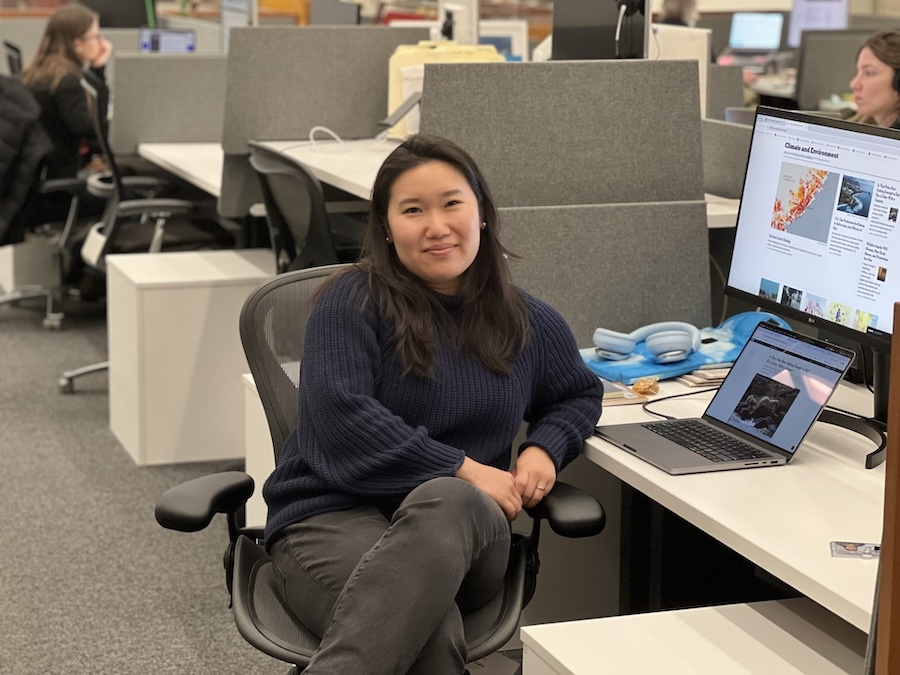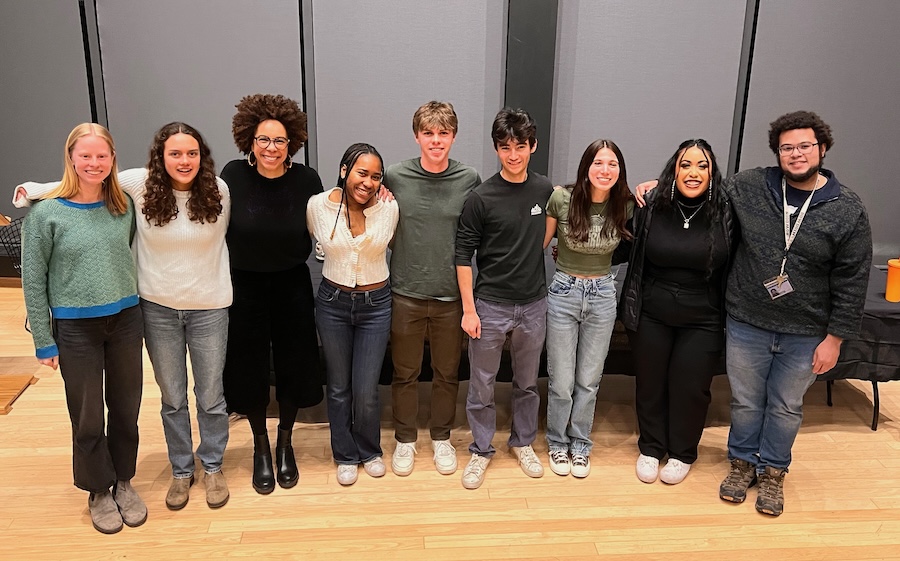Students Present Research on Mysterious Band of Rocks, Green Crab Fertilizer, and So Much More
By Rebecca Goldfine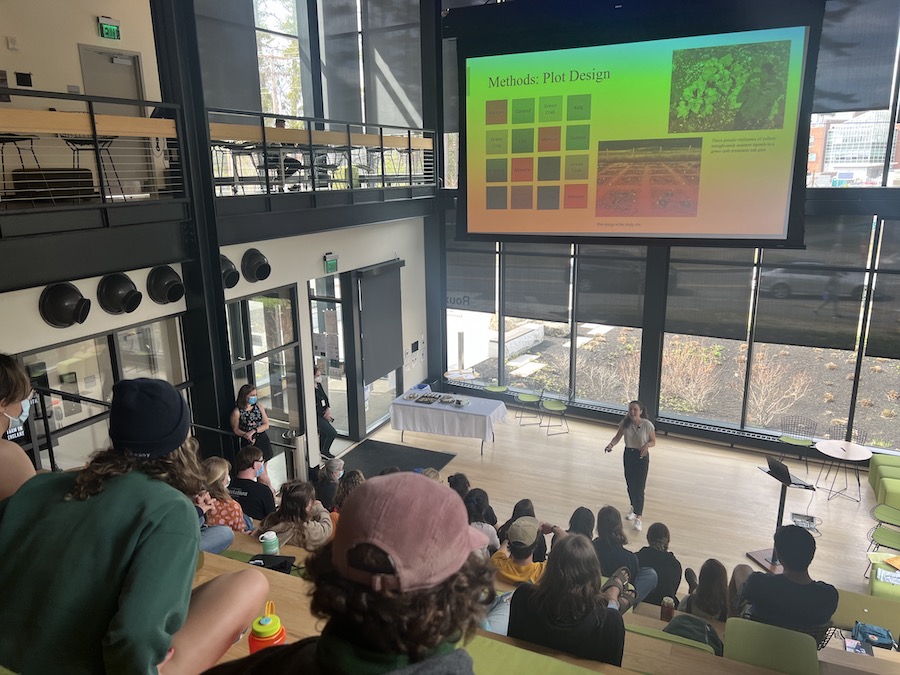
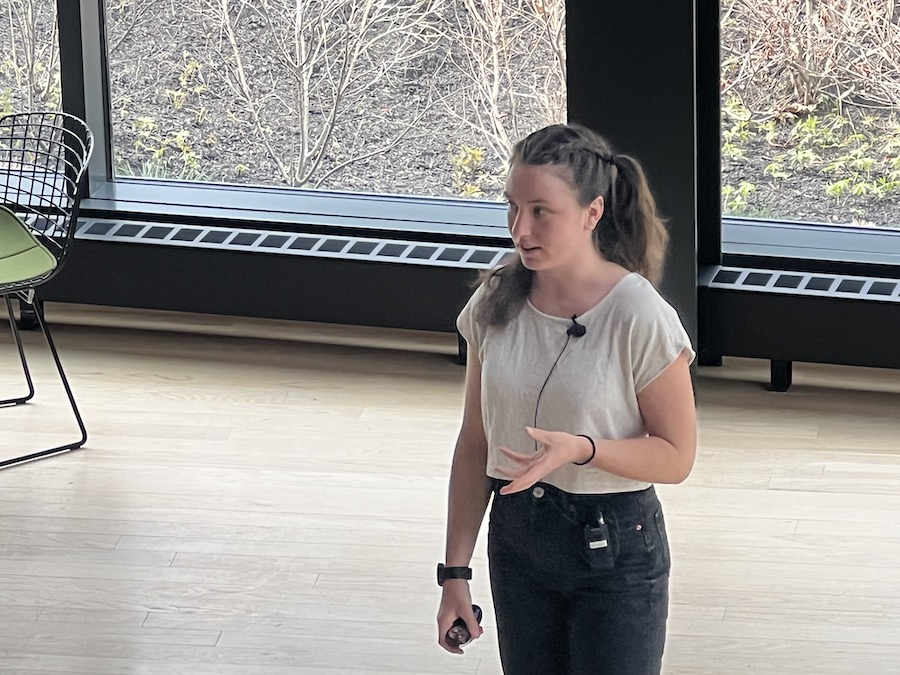
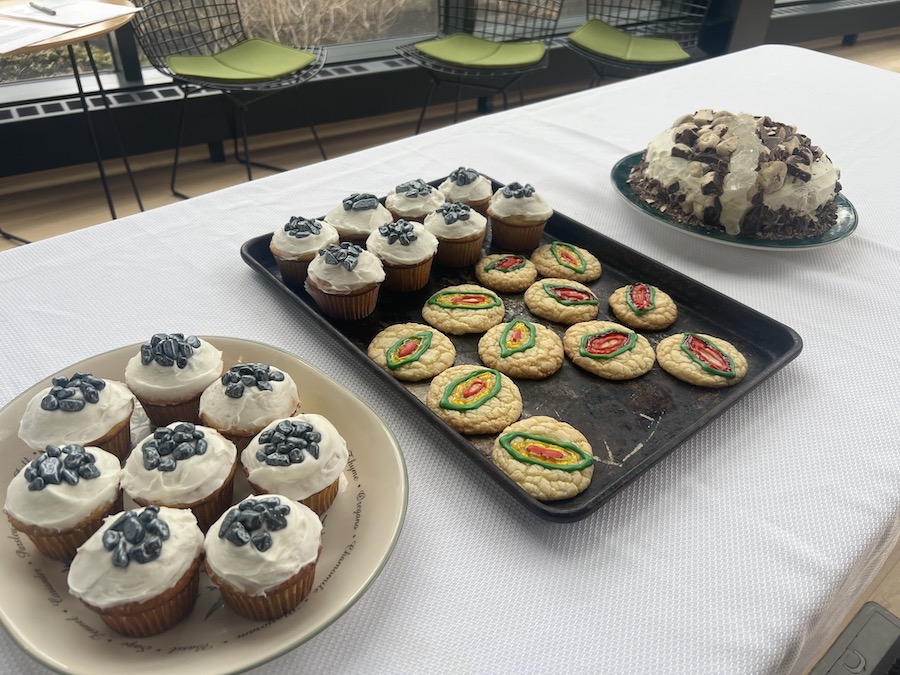

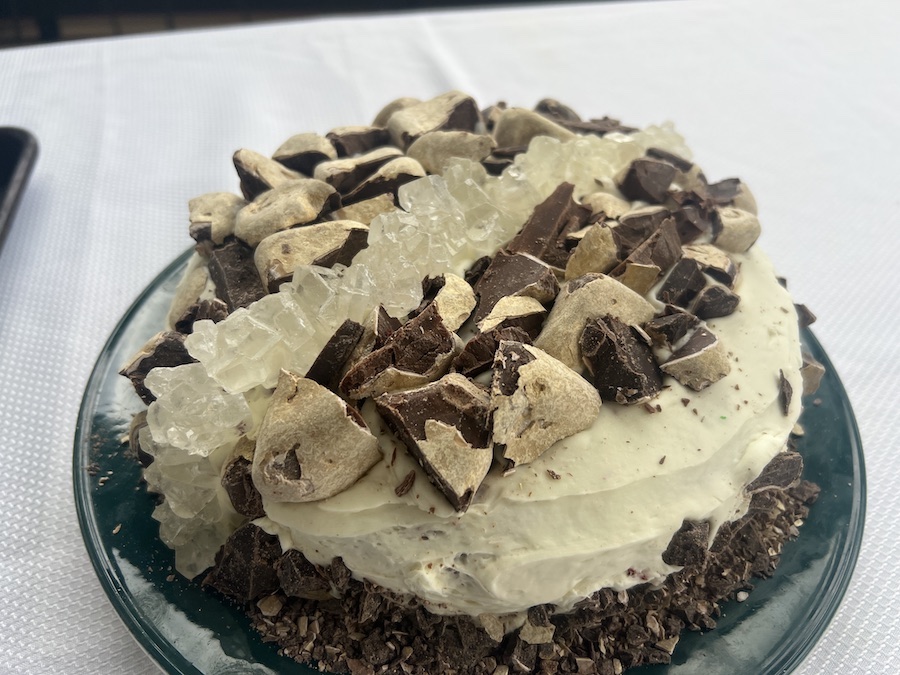
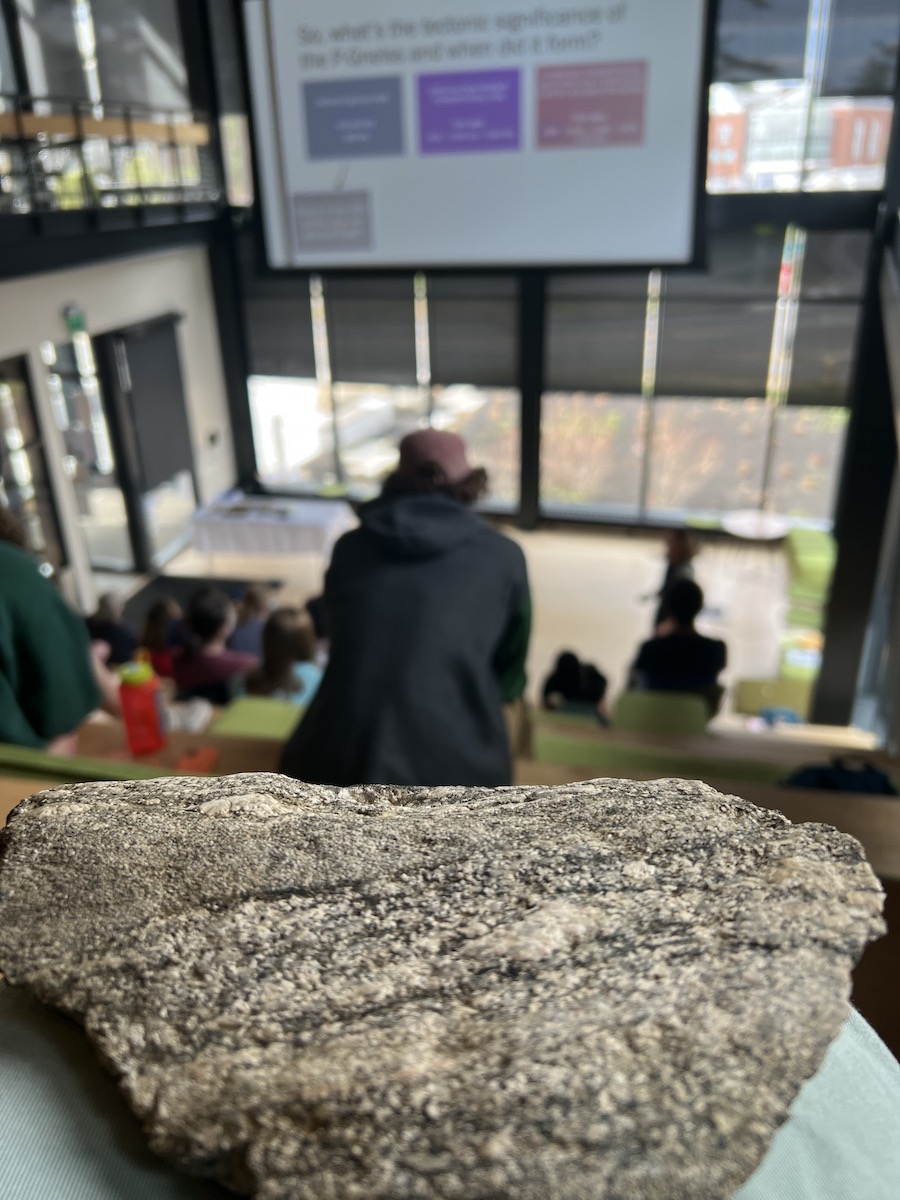
The seniors were invited to present their independent research projects in symposia held over two Fridays in the Roux Lantern. Below are brief abstracts of their projects.
The Use of Kelp and Green Crabs as Soil Amendments in Maine Agriculture: Delaney Bullock ’22
Bullock kicked off the series by describing her research into the potential of green crabs and kelp as fertilizer amendments—products added to soil to improve it's physical qualities. "The work put together my interests in sustainable agriculture and my studies in earth and oceanographic science," she said.
Her project began last year when she was a Denning fellow with the Merrymeeting Food Council, which has been trying to improve coordination with and communication between fishermen and farmers in Maine.
Developing kelp and green crab fertilizer is one way, of course, to create this link. But, turning these two species into soil amendments could also have far-reaching benefits. Kelp is a carbon sequester—so the more that is grown the better—and Maine needs to find a way to incentivize green crab trapping to decrease the crustacean's current rampage through coastal ecosystems.
To test the effectiveness of the two on crops, Bullock designed a study at the local community garden. She planted squash in sixteen small plots and applied four different treatments to them: chicken manure, kelp, ground-up green crab, or no fertilizer at all.
Based on her results, she argued there is promising evidence that kelp and green crabs are viable soil amendments. But the biggest barrier is developing a market, she warned, and recommended further studies on both products over longer growing periods.
Advisor: Phil Camill and Cathryn Field
Resolving the Mystery of the Passagassawakeag Gneiss: Holly Harris ’22
Harris investigated an "enigmatic band of rock" located north of Brunswick (from Whitefield to just south of Bangor). The band is a geological mystery with uncertain origins, mostly due to it being highly metamorphosed and deformed during the processes that created the Appalachian Mountains.
The Passagassawakeag Gneiss, "or P-Gneiss" as Harris called it, is found in a thin but continuous seventy-five-kilometer strip sandwiched between two geological regions known as the Cape Elizabeth Formation and the Bucksport Formation.

"Being able to unravel the timing and history of deformation that occurred in these rocks is important to figuring out what happened at the boundaries and to piece together the geological history of the area," Harris said.
She determined the primary ages of the band by collecting samples of zircon minerals—which can be analyzed and dated in a lab—from seven locations along the stretched-out P-Gneiss outcrop.
Using the age distribution of the zircon dated from each sample, she found that some of the P-Gneiss comes from igneous rock intrusions dating back to 380 million and 450 million years ago—some is a more highly deformed Cape Elizabeth rock, and some of the rock was sourced from an unknown provenance with zircon up to 2 billion years old.
Advisor: Emily Peterman
Timing and Extent of Holocene Glaciation in the Northeastern Brooks Range, Alaska: Cameron MacKenzie ’22
MacKenzie "examined the timing and extent of glacial advances and retreats in the northeastern sector of the Brooks Range, Alaska, since the end of the last major ice age, approximately 11,700 years ago, during the Holocene."
To shed light on whether Holocene climate trends, derived from the central Brooks Range, were a local phenomenon or if they were more regional in scale, she "used remote sensing techniques to reconstruct previous glacial extents, along with cosmogenic dating methods to determine the timing.
"Overall, my study works to address a broader goal of understanding the role regional climate has in the glacial extent of an area on thousand-year timescales."
Advisors: Emily Peterman, Phil Camill, Michelle Fame
Life in the Dirt: Controls on Nitrogen Mineralization on Organic Farms: Lucie Nolden ’22
"Without human intervention, soil can take care of itself. Robust soil ecosystems cycle nutrients like nitrogen through fixation by bacteria in root nodules, mineralization of organic nitrogen into plant-available forms, and immobilization by plant uptake," Nolden said. "But crop production and fertilizer application can upset soil’s circular nitrogen economy."
Nolden spent the fall talking to organic farmers around Maine and studying their soil to learn how farmers can best support natural nitrogen mineralization. This would boost yields and reduce the need for fertilizer application.
"I found that total organic soil carbon, along with the living root 'priming effect,' may be some of the most important controls on nitrogen mineralization, and I argue that conservation agricultural methods supporting the whole soil ecosystem may be the best approach to supporting nitrogen cycling," she concluded.
Advisor: Phil Camill
Trends within the Trench: Characterizing Warming Patterns at the Northeast Channel of the Gulf of Maine: Andrew Treat ’22
For his project, Treat worked with a twenty-year data set collected at University of Maine’s N01 hydrographic buoy to analyze long-term trends in temperature, salinity, and density at the Northeast Channel. His goal was to characterize how energy in the form of heat has moved (and will continue to move) into the Gulf of Maine.
Advisor: Collin Roesler
Assessing the Feasibility and Efficacy of CCS Implementation in the US Energy Sector: Angus Parton ’22
Parton researched the feasibility of large-scale implementation of carbon capture and storage (CCS) technologies in the United States energy sector.
"I have been researching CCS infrastructure and US as well as international policy for the past few months to assess the need for this technology and the likelihood of implementation," he said. "This project came about as a response to the global failure to reduce emissions of greenhouse gases despite the urgency and scale of anthropogenic climate change."
"Political and economic roadblocks to meaningful progress on emissions reductions demand that we now consider these more 'radical' solutions to climate change in tandem with more traditional solutions," he argued. "CCS will help address the urgency of the climate issue more quickly than emissions-reduction policy and therefore must be considered immediately."
Advisor: Emily Peterman

